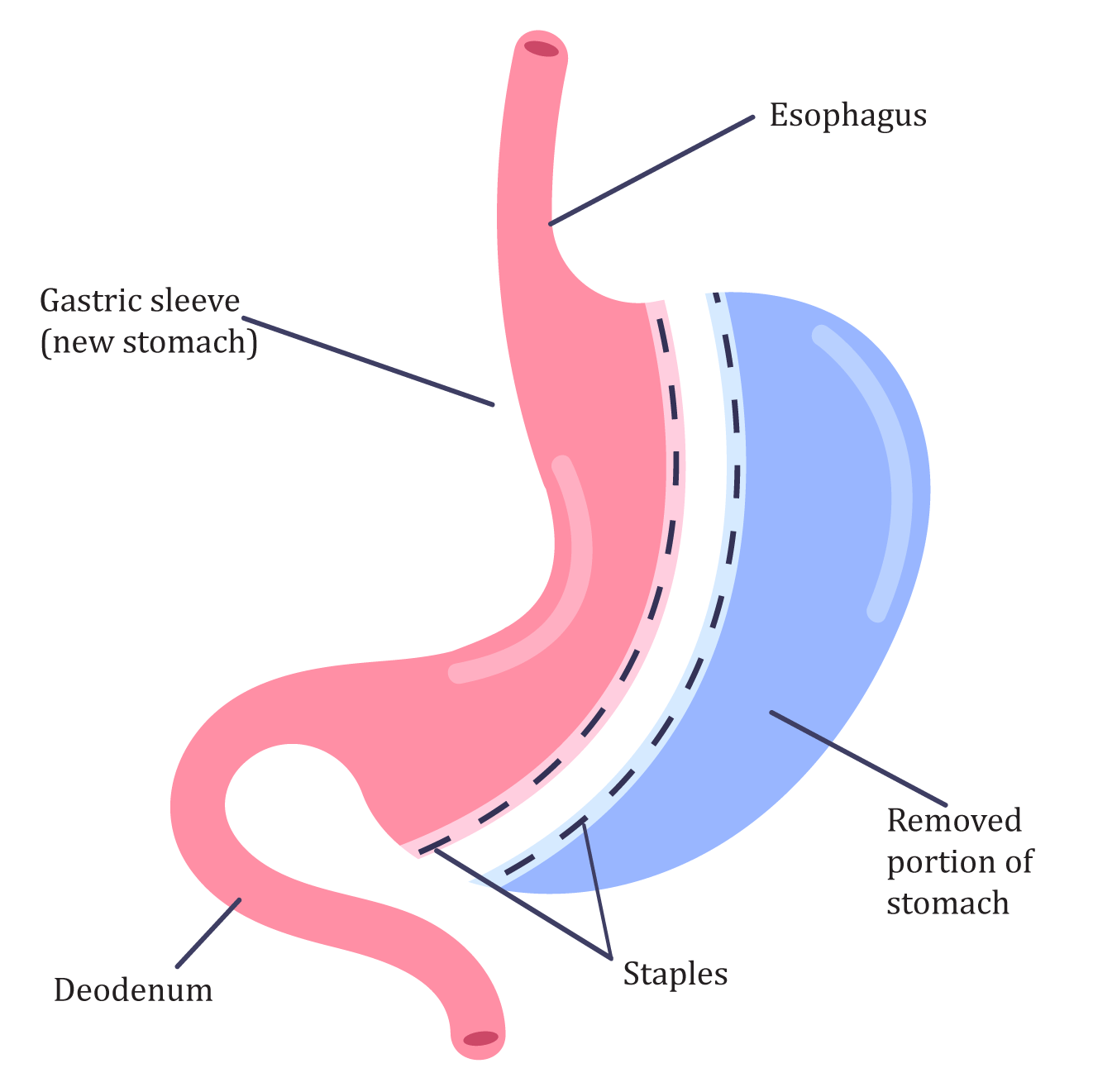
Vertical Sleeve Gastrectomy (VSG), also known as Gastric Sleeve, is a type of Bariatric surgery that promotes weight loss. It is usually performed through Laparoscopy (keyhole surgery), under general anaesthesia, and takes around 1-2 hours.
People planning to undergo this procedure must have BMI >40 or BMI >35 with metabolic disorders like diabetes, high blood pressure…
Let’s scroll down to learn more about this procedure!
Intra-operative Phase
In the operating room, the surgeon makes four small incisions in the abdomen. Then, through one of these incisions, he places a calibration tube into the stomach.
Once the tube takes place, the surgeon inserts a surgical stapler to create a smaller stomach.
The new stomach represents the left side of the original stomach. It is connected to the esophagus from the top and the small intestine from the bottom.
The rest of the stomach (on the right), which represents 75 to 85% of the original size, will be removed from the body through one of the incisions.

Postoperative Phase
The recovery phase is very short as you only need a 2-4 days hospital stay, then you can gradually resume work and daily activities. One of the major benefits of this procedure is that it promotes your health and mitigates your metabolic disorders. Eventually, you will take fewer medications.
The stomach produces and releases a significant amount of ghrelin (hunger hormone) cells. The latter will diminish amidst the omission of a part of the stomach and ultimately will lessen your feeling of hunger. Along with a healthy diet and physical activities, you need to keep controlling your eating behaviour for a long period to prevent weight regain.
Have you ever experienced VSG! If yes, feel free to share with us your experience through the comment section below! If not, would you take the next step to get rid of your excess weight and live a healthy life?


